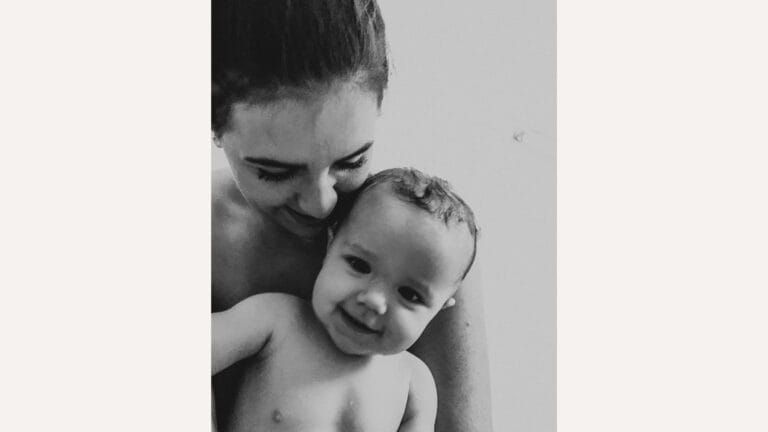Book review: Busy mom’s guide to ‘The Whole-Brain Child’

Social share: We read it so you don’t have to.
As a mom of a very stubborn 7-year-old and step-mom to a spirited 5-year-old, I need all the parenting help I can get. I frequently listen to podcasts and read as many books as I have time for, in hopes that I will teach my children to be kind and emotionally intelligent human beings.
So as soon as a friend lent me a copy of The Whole-Brain Child: 12 Revolutionary Strategies to Nurture Your Child’s Developing Mind, I was excited to dive right in.
Authored by Daniel J. Siegal, a clinical professor of psychiatry at UCLA, and Tina Payne Bryson, a child development specialist, this book offers a scientific perspective on the child’s brain and 12 clear strategies for handling challenging moments in parenting.
While I found this book to be very reader-friendly, I know many mamas struggle to find even a few minutes alone, so I’ve provided a summary of the book’s key insights and suggestions.
“Parenting with the brain in mind”
The book starts off by connecting with parents through relatable stories and everyday parenting experiences, and provides tangible ideas about the role the brain plays in our child’s responses. The concept of the left and right brain is introduced and emphasized as a key component when trying to understand and navigate difficult situations with our children.
“Our left brain helps us to think logically, and our right brain is the part of our brain that experiences emotions,” they explain. Both our left and right brain need to work together to have meaningful and balanced interactions and relationships.
This was particularly helpful for me to understand and learn more about the why behind tantrums and overly-emotional responses.
Whole-Brain strategies—connecting and calming big emotions
Once we understand the concept of the right and left brain needing to be integrated, it’s time to learn how we teach our children how to appropriately use both parts.
This starts with stepping back and assessing our child’s responses and trying to understand which part of their brain is being activated.
When our children are having clear meltdowns that appear to be irrational, that is not the time to try and engage them in a logical discussion. Rather it is more effective to meet them right brain to right brain and connect with them on an emotional level.
Once we’ve validated their feelings (no matter how ridiculous they may seem), then we can bring in logic and explanation once those big feelings have calmed down a bit.
For example: When your child falls and hurts herself, explaining to her at that moment why she should have been more careful, is not going to help her process her experience. Instead, use phrases like, “That must have really hurt, you were going really fast,” and then you can later bring up the importance of safety and being aware of your surroundings.
“The upstairs and downstairs brain”
This concept was the most fascinating part of the book for me. It paints the picture of your brain as a house with an upstairs and downstairs.
The downstairs brain is in charge of functions such as breathing and blinking and strong emotions, whereas the upstairs brain is responsible for thinking and analyzing.
Our upstairs brain can help us control emotions and consider consequences, but only if it is functioning healthily. This part of the brain does not fully develop until the early 20s, and as parents we have a significant role in helping that part to mature.
Just like our right and left brain, both the upstairs and downstairs parts need to be in harmony. We need both emotions and logic to thrive, and our children need to be taught how and when to use both.
The book introduces the metaphor “building a staircase” in order to bridge the gap between the two. We can do this by recognizing where our child’s responses are coming from. If your child is trying to get his way by demanding something from you, but he isn’t totally out of control, he is likely acting from his upstairs brain. In this case, it is best to set firm boundaries and explain consequences of inappropriate behavior (and sticking to those consequences).
If your child is completely flooded with emotion and appears to have no control over his emotions, the downstairs brain has taken over. In this situation, it is best to use redirection and calming techniques (breathing or body movement).
“Memories,” myths and important truths
This section of the book debunks some of the myths about the functionalities and roles of our memories.
Many of us think that our brains store information like we store documents when in reality our memory serves the purpose of making associations—linking our past experiences to our present understanding.
This is why our memory can trigger experiences from the past that then dictate our expectations for the future.
For example last year during baseball season, one of the team-moms brought bubble gum for all the kids after practice. One week she was not able to make it, and I stepped in to help. At the end of practice, the kids were asking me where the bubble gum was (since I didn’t have any). Because of their memory of her bringing gum, that was their expectation going forward for every baseball practice.
The reason why it’s important to understand memories is that it impacts our child’s expectations and how they then respond to things.
If your child has an imprinted memory of bubble gum after practice and then doesn’t get it, feelings of disappointment will likely drive his response. Likewise, if your child associates fear with a specific activity (such as falling off a bike), she might not want to participate in that activity again.
What we can do in these situations is try to understand where these overwhelming feelings are coming from. By asking the right questions and creating an opportunity for your child to process, you can help her to work through those associations and bring in some tools to deal with those big feelings.
The brain is complex, and understanding our children especially during challenging moments, can be one of the hardest parts of parenting. But as the book explains, “One of the main benefits of the whole-brain perspective, is that it empowers you to transform the daily parenting challenges that can interrupt the fun and connection you have with your children. Whole-brain parenting allows you to go far beyond mere survival”.
Once we understand our children, that awareness allows us to connect with them on a deeper level and raise them in confidence that we are helping them to thrive.
If you are a parent that struggles to find effective solutions during challenging moments, then I highly recommend this book. Since reading this book I feel I have gained a new understanding of why my children act the way they do and how I can guide them using the tools and resources it provides. Happy reading! ?


































